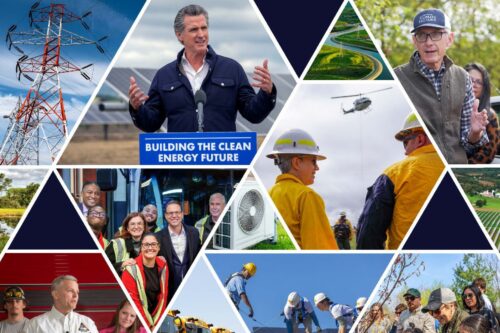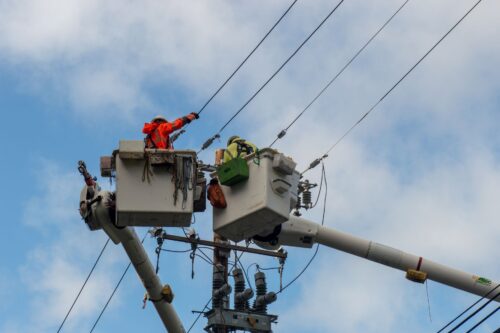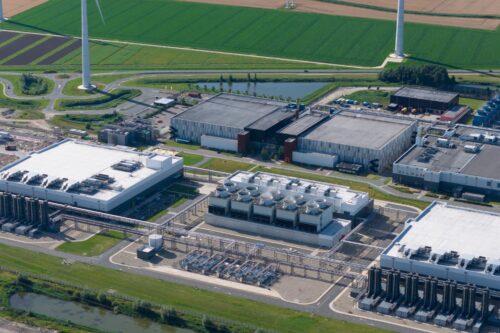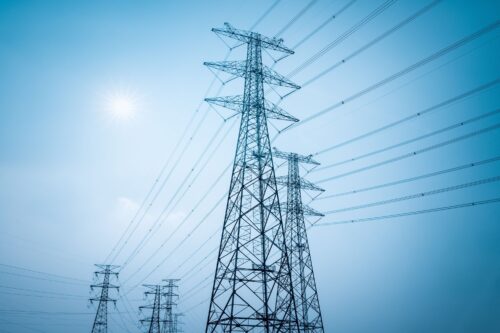 E3 Study for Amazon Identifies Rate Design Best Practices to Manage Large-Load Growth
E3 Study for Amazon Identifies Rate Design Best Practices to Manage Large-Load Growth
E3 released a new white paper for Amazon that examines, (1) how utilities can effectively design electric rates to serve …
 E3 in 2025: Insights from a Big Year for Reliability, Electrification, and Large Loads
E3 in 2025: Insights from a Big Year for Reliability, Electrification, and Large Loads
2025 was a turbulent year for the energy sector. Demand from electrification and data centers surged at the same time …
 Insights from New Jersey’s Latest Energy Master Plan
Insights from New Jersey’s Latest Energy Master Plan
New Jersey has released its 2024 Energy Master Plan, finalized and published in 2025. E3 supported the State by providing …
 Forecasting Large Loads in the Age of AI and Data Centers
Forecasting Large Loads in the Age of AI and Data Centers
U.S. utilities and system operators are confronting a level of load uncertainty not seen in decades. New demand drivers such …
 E3 Supports U.S. Climate Alliance in 2025 Annual Report on State-Led Progress and Pathways to Net Zero
E3 Supports U.S. Climate Alliance in 2025 Annual Report on State-Led Progress and Pathways to Net Zero
The U.S. Climate Alliance, a bipartisan coalition of governors committed to securing America’s net-zero future, released its 2025 Annual Report, …
 California’s Clean Energy Permitting Initiative: Resources to Reduce Barriers for Large-Scale Renewables
California’s Clean Energy Permitting Initiative: Resources to Reduce Barriers for Large-Scale Renewables
California state law sets a target of 100% clean electricity sales and economy-wide carbon neutrality by 2045, which requires developing …
 New PG&E Electrification Impact Study: Smart Planning Can Lower Long-Term Costs
New PG&E Electrification Impact Study: Smart Planning Can Lower Long-Term Costs
Pacific Gas and Electric Company (PG&E) recently filed its draft Electrification Impact Study (EIS) Part 2 with the California Public …
 Meeting New Brunswick’s Growing Capacity Needs with a Future-Ready Resource Adequacy Planning Framework
Meeting New Brunswick’s Growing Capacity Needs with a Future-Ready Resource Adequacy Planning Framework
New Brunswick Power (NB Power) is entering a period of heightened electricity reliability challenges. With accelerating load growth, aging infrastructure, …
 Leveraging Flexible DERs for Local Grid Relief in Massachusetts
Leveraging Flexible DERs for Local Grid Relief in Massachusetts
Massachusetts is moving quickly to electrify buildings and vehicles as a part of the clean energy transition, while also seeking …
 Demand Response as a Capacity Resource in SPP’s Era of Data Center Growth
Demand Response as a Capacity Resource in SPP’s Era of Data Center Growth
SPP is in the middle of a reliability rethink. The region’s highest-risk hours are no longer just hot summer afternoons. …
 2025 Fall Recruiting: E3 Open House
2025 Fall Recruiting: E3 Open House
E3 is kicking off its Fall 2025 recruiting with a virtual Open House for all interested applicants across all positions! …
 E3 Conducts Cost-Benefit Assessment of Grid-Enhancing Technologies in Maine
E3 Conducts Cost-Benefit Assessment of Grid-Enhancing Technologies in Maine
Maine’s electric grid is facing pressures: aging infrastructure, rising electricity demand due to home and vehicle electrification, and the integration …
 New Methods to Address Heightened Uncertainty: E3 Releases Review of Probabilistic Planning Methods For Transmission Planners
New Methods to Address Heightened Uncertainty: E3 Releases Review of Probabilistic Planning Methods For Transmission Planners
Decarbonization policies, the accelerated integration of renewable energy resources, rising electrification demands, and the growing frequency and severity of extreme …
 Unlocking Flexibility at the Grid Edge: New E3 Analysis Quantifies the Value of Smart Panels Under Utility Ownership
Unlocking Flexibility at the Grid Edge: New E3 Analysis Quantifies the Value of Smart Panels Under Utility Ownership
As utilities across the U.S. confront growing electric loads and aging infrastructure, E3’s new white paper, Unlocking the Value of …


